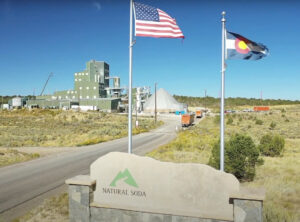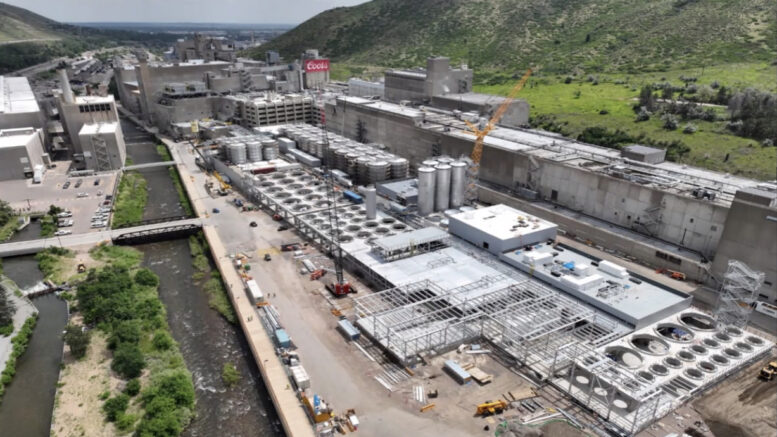After more than two days of strenuous debate, Colorado regulators late Friday approved a first-of-its-kind set of regulations to limit emissions from large manufacturers — rules that include most of the changes that business leaders requested of the state to make them more feasible.
The compliance pathway for the 18 companies affected by the Greenhouse Gas and Energy Management for Manufacturing Phase 2 (GEMM 2) regulations won’t be easy, to be sure. Facilities ranging from the Suncor Energy refinery in Commerce City to the Molson Coors Beverage Co. plant in Golden to the remote Natural Soda mine in Rio Blanco County must begin cutting emissions by 2026, reduce greenhouse gases by as much as 15.5% by 2030 and face even more stringent regulations if they can’t hit near-term goals.
But by the end of a Colorado Air Quality Control Commission hearing where the debate often turned to whether state officials should consider potential production cutbacks and loss of jobs as they determined the severity of the rules, a majority of commissioners said that they should. As such, a split commission agreed to several concessions that a coalition led by the Colorado Chamber of Commerce had sought, including a two-year delay in the imposition of the first emissions-cutting requirements, the creation of a fund into which facilities could pay as an avenue of compliance and the creation of a future carbon-capture option as an allowable way to cut emissions.
Part of a larger effort
“The Environmental Justice Act is not a mandate to cut greenhouse gas emissions regardless of costs or economic harms,” attorney Chris Colclasure, attorney for the Cargill beef-processing plant in Fort Morgan and former Colorado Air Pollution Control Division deputy director, testified, referencing the 2021 state law that led to the rulemaking. “The answer to this rule is to present the twin goals of a healthy environment and a healthy economy.”

The entrance to the Natural Soda plant in Rio Blanco County
The new rule is part of a wide swath of efforts the state is making to reduce emissions and pollutants as the U.S. Environmental Protection Agency has identified the Northern Front Range as being in severe nonattainment of federal ozone regulations. Previous efforts have ramped up permitting requirements for oil and gas companies, tied highway-expansion funding to emissions-reduction requirements and mandated commercial buildings to reduce emissions, but this rule is the first in the nation specifically targeted at cutting greenhouse-gas emissions from the manufacturing sector.
Under the rule, 18 facilities that produce at least 25,000 metric tons of carbon-dioxide equivalents a year each get different emissions-reduction requirements, with bigger cutbacks required of those that emit the most (such as Suncor) and lighter loads for those that have cut pollution significantly since 2015. The Environmental Justice Act requires cuts of 20% of emissions by 2030 in the industrial and manufacturing sector as compared to 2015, and individual facility cuts range between 1% and 15.5%.
Public health a major focus
Some of the most emotional testimony during a Wednesday public-comment session that drew 61 participants focused on the harmful effects that many people living around Suncor believe the state’s only oil refinery is having on their health — and their requests to hold the company accountable for it.
Suncor officials pointed out that the company is responsible for almost half of the 269,000 metric tons of emissions the 18 facilities must combine to eliminate by 2030 and that forced production cuts could raise statewide gas prices between 60 cents and $1.20 a gallon if that was its only compliance path. But several area residents argued that it should be subject to stricter rules than lower-emitting companies, and Denver-area psychotherapist William Pryorsaid he rejected “the idea that economic prosperity and job security are more important than the health of my child.”
That set the tone for the hearing, which stretched from the late afternoon Wednesday until after 11 p.m. Friday and centered on competing proposals form the Colorado Chamber and the Environmental Defense Fund, one that was more lenient and one that was stricter in compliance than the APCD plan. EDF and other allies in the environmental community asked that if the AQCC would not adopt the EDF plan that it at least would reject the APCD plan that it felt allowed for too many “pay to pollute” loopholes and require the division to restart negotiations and emerge with a better plan.
The approved plan for emissions limits
Commissioner Patrick Cummins argued, however, that what needs to be done is to begin enforcement of a plan to bring down emissions and then to monitor its results and determine by the end of 2025 whether further changes are needed. And by a 5-2 vote, the commission backed the APCD plan with several changes favored by the chamber and regulated facilities.
Under the plan, facilities must meet their reduction goals first by making onsite upgrades that are technically feasible and cost-effective at a rate of $89 or less per metric ton of pollution, which is the federally set social cost of greenhouse gas emissions. Two changes requested by the Colorado Energy Office and other environmentalists permit the allowable cost to rise if the federal government raises its social-cost estimate and require upgrade costs to be considered as a portfolio, meaning improvements that may be $100 per metric ton still can be required if other upgrades are of lower expense and add up to an average cost of less than $89 per metric ton.
Once that avenue has been exhausted, facilities that remain short of their goals can buy credits that are generated and then put onto a market by facilities that have exceeded their emissions-reduction requirements. All parties favored the idea of a credit market, but an alternate proposal offered by EDF would have capped the allowable credits on the market based on an annually decreasing emissions cap.
Business-requested changes
With no certainty over whether such a credit-trading system would work, however, Colorado Chamber leaders sought creation of a last-resort greenhouse-gas management fund into which out-of-compliance companies would pay fees that would fund emissions-reduction projects particularly in poorer and more polluted communities. While commissioners stopped short of creating the fund immediately, they directed APCD to return by September 2025 with a plan to create such a fund and have it up by 2026.
That timing is key because commissioners amended the original proposal also to allow for initial compliance in three-year cycles — one running from 2024-26 and another from 2027-29 — rather than mandating companies to reach certain goals by 2024 as originally planned. Numerous company leaders testified that because emissions-reduction strategies take years to approve and implement, setting an initial deadline at the end of next year would necessitate production cuts that would send jobs and emissions to other states.
Core to the debate was the idea of “leakage” — the theory that companies that couldn’t comply with the new standards would transfer production of goods from fuel to beer to mozzarella cheese to factories in less regulated states. Not only would that lead to economic hardship for Coloradans, but it would increase emissions in other states and would boost the carbon footprint needed for those companies to ship products into Colorado from other states rather than produce them locally.
The Climate Equity Community Advisory Council called such threats “scare tactics and corporate propaganda,” and EDF presented an economics professor who argued that the instances in which companies will ship jobs out of state are limited. Erik Woodward, an Earthjustice attorney representing GreenLatinos, said the law that required the rulemaking did not reference economic balances.
Meaning of the Environmental Justice Act
“Is the objective of the Environmental Justice Act to protect communities or promote growth? I’d like to note the word ‘leakage’ is not used once in the Environmental Justice Act,” Woodward said. “The point of the Environmental Justice Act is to protect communities.”
But business leaders got an assist from Colorado Energy Office Executive Director Will Toor, whose objections to the alternate proposal from EDF noted that it predicted a $4.8 billion slower growth in gross domestic product from the regulated GEMM 2 facilities because of the rule.
The vote came as several other recent AQCC decisions have been called into question. A federal appeals court ruled this month that state must rewrite an air-quality improvement plan it OK’d in December because it didn’t account enough for fracking emissions, according to the Denver Post. And three environmental groups sued Colorado last month and argued that a recently approved rule on disproportionately impacted communities was not stringent enough, according to the Denver Gazette.
Commissioner Jon Slutsky referenced that dissatisfaction of community members in the commission’s recent efforts before he voted against the plan, saying he was “pretty disappointed” in it. The other “no” vote came from Commissioner Elise Jones, who said she would have preferred the APCD rewrite the plan to secure quicker emissions reductions and reductions of co-pollutants in disproportionately impacted communities, among other changes.

Colorado Air Quality Control Commission member Curtis Reuter asks a question during a hearing Thursday.
Balance of economic growth and emissions limits
The concerns about economic distress and layoffs seemed to win out for other commissioners, however. Commissioner Curtis Rueter said he worried particularly about the potential impacts on rural communities where these facilities employ an outsized portion of residents, and Commissioner Bill Gonzalez said he found “a lot of credibility” in the fears of regulated companies — and in their efforts to reduce emissions in feasible ways.
As such, the rule also provides allowances for companies that have made significant capital investments since 2015, such as Molson Coors and Natural Soda, to grow their allowable emissions in order to grow production to certain levels and recoup their investments. Some of those companies also are investing heavily in pollution-reduction equipment — Molson Coors’ emissions are down 40% since 2015, executive Peter Coors testified — and the new rule seems structured to allow growth while also cleaning the air.
“This is a difficult issue with a lot of somewhat competing interests, somewhat competing challenges,” David Beckstrom, the second assistant attorney general representing the APCD, said during wrap-up statements before the final vote. “There are two keen assertions: The rule doesn’t do enough. The rule does too much …The division has tried to find a landing place that balances the various interests.”
